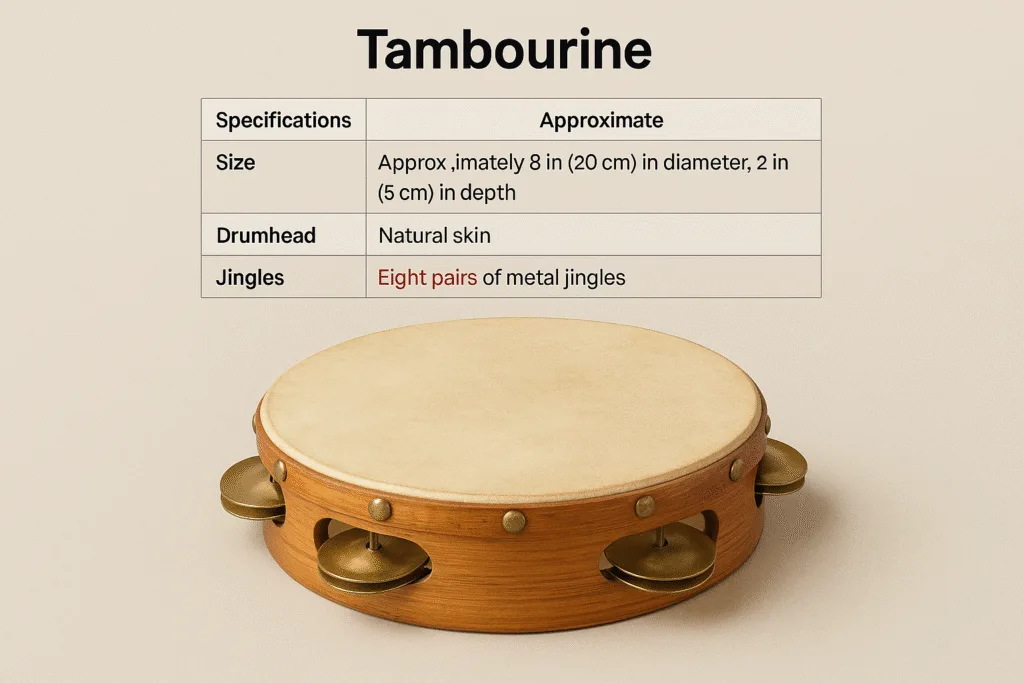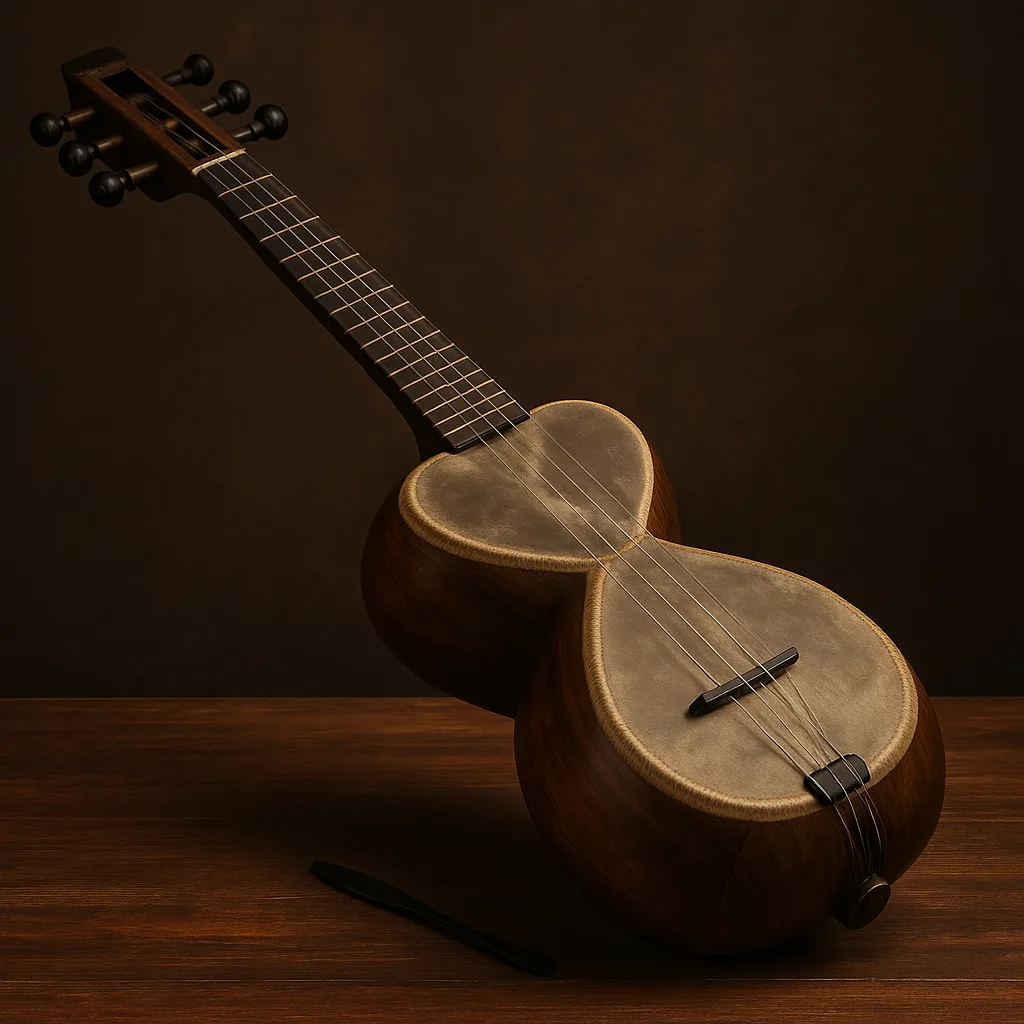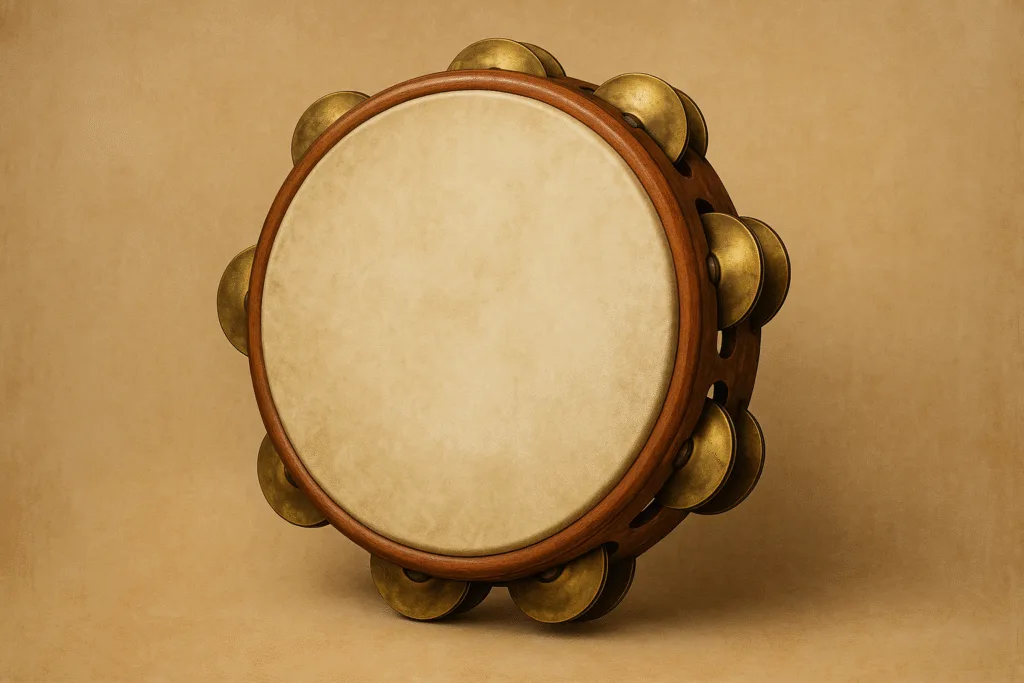The Tambourine: From Ancient Rituals to Modern Stages
Quick Features of the Tambourine
| Feature | Details |
|---|---|
| Origin | Ancient Middle East, Mediterranean, and Europe |
| Type | Frame drum with metal jingles (zills) |
| Size | 20–30 cm diameter, 5–7 cm deep |
| Materials | Wood or plastic frame, skin or synthetic head, brass or steel jingles |
| Primary Role | Rhythmic and textural support in folk, classical, and popular music |
Historical Background
The tambourine is one of the world’s most widespread percussion instruments. Its origins trace back to the ancient Middle East, where it appeared in religious ceremonies, processions, and folk rituals. Archaeological findings show depictions of frame drums with jingles in Mesopotamian and Egyptian art.
By the Greek and Roman eras, tambourines were associated with goddesses such as Cybele and Bacchus, symbolizing celebration and ecstasy. Throughout the Middle Ages, the instrument traveled across Europe through trade and cultural exchange, becoming central to folk dances and sacred music. Its mobility and simple design made it a companion of travelers, minstrels, and religious processions alike.
Cultural Significance
The tambourine is more than a percussion tool — it carries cultural symbolism across continents. In the Middle East, it is linked with rituals and celebrations. In Mediterranean traditions, it embodies festivity and dance. In Europe, it became an essential instrument in folk ensembles and Renaissance courts. Today, it remains present in pop, rock, orchestral, and world music.
Although not individually listed by UNESCO, the tambourine is deeply tied to intangible cultural heritage through its role in Neapolitan tarantella, Andalusian flamenco, and Middle Eastern rituals that UNESCO recognizes within broader traditions.
Construction and Design
Frame and Shell
The tambourine’s frame is usually made from wood, though modern instruments often use lightweight plastic. Its diameter averages 25 cm, allowing it to be held comfortably in one hand. The depth ranges between 5–7 cm.
Head Material
Traditional tambourines use goat or calf skin for warmth and resonance, while modern ones frequently employ synthetic heads for stability. Some models omit the head entirely, functioning only as a jingle instrument.
Jingles (Zills)
Pairs of metal discs (often brass or steel) are mounted into slots on the frame. These jingles create the tambourine’s signature shimmer. Depending on the build, there may be 4 to 8 pairs, influencing brightness and sustain.
Playing Techniques
The tambourine’s appeal lies in its versatility. Players can achieve a wide spectrum of sounds with simple gestures:
- Shake: Produces continuous jingle resonance, ideal for dance rhythms.
- Strike: Hitting the head or rim with the palm or fingers for accented beats.
- Thumb roll: Running the moistened thumb around the head to create a sustained roll.
- Finger taps: Light touches on the head for intricate patterns.
- Knee or hip strike: Used in folk dances to combine movement and rhythm.
Mastering these techniques requires coordination, precision, and dynamic control. A skilled tambourinist can move effortlessly from delicate textures to driving, festival-like energy.
Musical Context
Folk and Classical Settings
In Italian folk traditions, the tambourine leads the tarantella dance. In Spain, it appears in flamenco and regional dances. In the Middle East, it complements frame drums like the riq and daf. Classical composers from Mozart to Berlioz also employed the tambourine in orchestral works, highlighting its exotic and festive character.
Modern Music
The tambourine has become iconic in rock and pop. From 1960s bands like The Beatles and The Rolling Stones to gospel choirs and contemporary indie groups, its crisp accents and shakes add sparkle to recordings. It also features in film scores and global fusion projects, showing its adaptability across genres.
Learning and Practice
Beginners usually start with basic strokes and shakes, focusing on timing and hand relaxation. Teachers encourage alternating between head strikes and jingle shakes to build coordination. Folk traditions often transmit tambourine technique orally, while music conservatories provide formal training. Online lessons now make the instrument accessible to learners worldwide.
Notable Performers
Throughout history, virtuoso players have elevated the tambourine’s reputation. In Italy, Carmen Consoli and regional folk ensembles have preserved traditional techniques. In Spain, flamenco percussionists highlight its role alongside guitars and palmas. In modern world music, artists like Glen Velez have reinvented the tambourine’s possibilities, blending it with frame drum traditions and experimental soundscapes.
Care and Maintenance
Because natural skins are sensitive to weather, players should store tambourines at 40–55% humidity. Avoid direct sunlight or heat that may loosen the head. Synthetic-headed models require less maintenance but benefit from regular cleaning. Metal jingles should be gently wiped to prevent oxidation and preserve brightness.
Buying Tips
- Choose between headed and headless models depending on style.
- Check the balance: too heavy a frame tires the hand, while too light may lack projection.
- Ensure jingles sound even — mismatched tones can disrupt ensemble playing.
- Consult teachers or folk musicians to select models suited to regional styles.
Global Presence
The tambourine’s journey from ancient ritual instrument to modern global icon highlights its adaptability. It remains a favorite across genres, blending seamlessly into both sacred ceremonies and stadium rock concerts. With its brilliant sound, portability, and cultural depth, the tambourine continues to inspire musicians and audiences worldwide.
References



